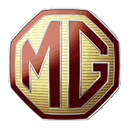The car is cleaned off and again rolled into the paint booth. After the same prepping routine and removal of dust with a tack-cloth as before, we are ready to apply the next layer of product, called primer-surfacer, or just surfacer. The primer part of the name implies that it is suitable to go over any bare metal that our sanding may have exposed. The surfacer part describes what we are trying to accomplish. We are looking to have a smooth coat of material under out final paint. Surfacer builds up quickly and fills gaps and scratches better than anything. The products I use are all catalyzed to eliminate shrinkage problems later on. Primer-surfacer gets shot on in several very heavy coats and takes from a minimum of an hour up to overnight to dry.
The nice thing about primer-surfacer is how easily it sands. Though it is hard and stable, it cuts well with sandpaper. I call it “making fluff”, since it makes a huge quantity of light dust when sanded.
We roll the car back to the dirty side and lightly scuff-sand the entire surface to break any gloss. Then we cover the car a “guide-coat”. Old school painters used to shoot a light coat of lacquer paint, since it dried quickly and was inexpensive. Its drawback was that it did need to dry and tended to be rather soft, which could clog the paper. We now use a 3M product specifically designed to be used as a guide coat, primarily made up of a fine graphite powder. This will allow us to visually follow the progress of our sanding, without clogging up our paper.
We can now start sanding in earnest. Starting with 180- or 220-grit, we sand the surfacer, looking for flaws in our previous bodywork. Any areas that do not show even sanding cuts as we go indicate low spots, which will require additional glazing putty to bring them up flush with the surrounding area. Remember, at this point we are looking for flaws that are less than .030”, or 1/32”, and may show up only in the right light or from certain angles. After touching up any low spots, pits or flaws, and sanding the entire car, we will have to shoot surfacer again. It may take several bouts of surfacer and sanding to get the car to the shape and finish we want.
Once we are content with the bodywork, and cannot find any more flaws, it is back into the booth for a final coat of surfacer.
